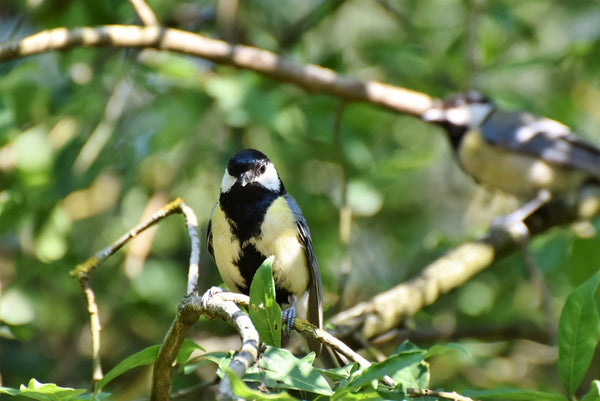
Great Tit: Identification, Behaviour, and Feeding Tips
Share
The Great Tit (Parus major) is a passerine bird and the largest member of the tit family (Paridae).
It's perhaps best recognised by its glossy black crown and pure white cheeks with a black band down the centre of its yellow chest. They have a range of vocabulary; the most familiar sound 'teecha-teecha-teecha' as well as a ringing ‘zinc-zinc’.
Great Tits can be seen all year round in woodlands, parks and gardens throughout the UK.
As a familiar garden visitor, they can often seem quite aggressive characters on the bird table - fighting off smaller members of the tit family for table scraps; however, during the winter time, Great Tits join forces with Blue Tits and others to form roaming flocks, which scour the countryside and gardens in search of insects, larvae, berries, earthworms and - of course - bird food, one of its favourites being our Huskfree Advance range.
Huskfree Advance is a no mess, no waste bird food recipe that's 100% edible, high-energy bird seeds plus won't germinate beneath feeders. It includes sunflower hearts and the diets enriched with a natural source of calcium. It's easy to feed in a tube-type seed feeder, on a bird table or even sprinkled on the ground.
Great Tits will also readily take Haith's premium peanuts, which are specially selected for their quality, colour and size. In fact, when it comes to picking peanuts for wild birds, we know what to look for! The nuts may vary from time to time in appearance; however, we always choose the larger 40/50 nuts per ounce grade, because they're high in calories and exceptionally high in beneficial oils.
These are truly wonderful looking birds just seeing them hop from branch to branch and putting on an entertaining dance at the bird table and feeder, they are such a delight to watch.

Written by Tina Jakes
